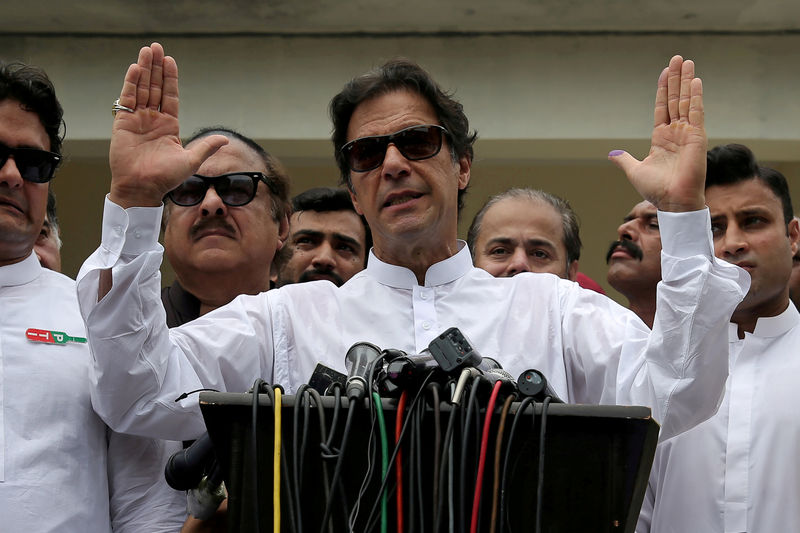 © Reuters. FILE PHOTO: Cricket star-turned-politician Imran Khan, chairman of Pakistan Tehreek-e-Insaf (PTI), speaks after voting in the general election in Islamabad
© Reuters. FILE PHOTO: Cricket star-turned-politician Imran Khan, chairman of Pakistan Tehreek-e-Insaf (PTI), speaks after voting in the general election in IslamabadISLAMABAD (Reuters) – New Pakistani Prime Minister Imran Khan will visit China next week and meet President Xi Jinping, Pakistan’s foreign ministry said on Thursday, on a trip seen as vital to Islamabad’s efforts to obtain fresh loans to prop up the economy.
Khan, accompanied by Foreign Minister Shah Mahmood Qureshi, will lead a delegation from Nov. 2-5 which will sign several agreements on “diverse fields”, the foreign ministry said in a statement. Khan is also set to meet Chinese Premier Li Keqiang.
This week Pakistan received a $6 billion rescue package from Saudi Arabia, but officials say it is not enough and the country still plans to seek a bailout from the International Monetary Fund (IMF) to avert a balance of payments crisis.
On Wednesday, Khan said Pakistan was also in discussions with two “friendly nations” for more loans, with analysts saying one of those countries was China.
Though China is now Pakistan’s closest ally, Khan’s newly elected government has sought to re-think the two countries’ signature project, the $60 billion China-Pakistan Economic Corridor (CPEC), which Beijing touts as the flagship infrastructure program in its vast Belt and Road Initiative.
Pakistan has sought to amend CPEC to put greater emphasis on projects that focus on social development, rather than purely on infrastructure.
“Prime minister’s visit is expected to provide further impetus to enhancing the existing strategic ties between Pakistan and China and break new grounds for broadening the bilateral partnership,” the foreign ministry said in a statement.
After visiting Beijing, Khan is set to be a key note speaker at the First China International Import Expo in Shanghai, the ministry added.
Fusion Media or anyone involved with Fusion Media will not accept any liability for loss or damage as a result of reliance on the information including data, quotes, charts and buy/sell signals contained within this website. Please be fully informed regarding the risks and costs associated with trading the financial markets, it is one of the riskiest investment forms possible.
Source: Investing.com





























